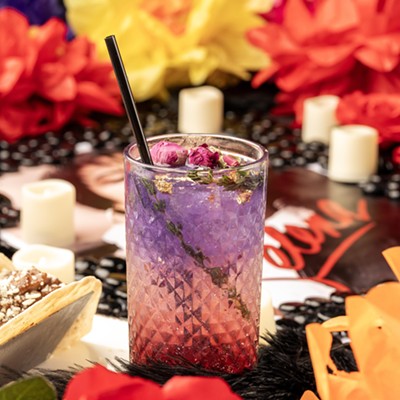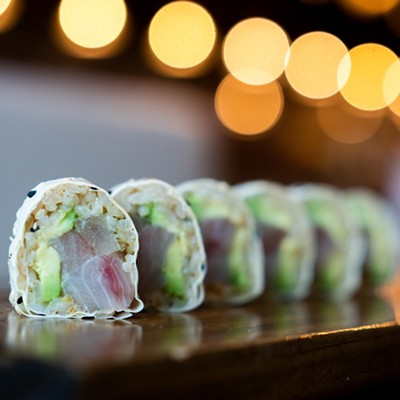It was only a matter of time before we hit Vietnamese food. The cuisine has become one of Houston's favorite over the last few decades -- coinciding with the large influx of Vietnamese immigrants that began following the Vietnam War -- with dishes such as pho now rivaling cheese enchiladas as sought-out comfort food and banh mi joints rivaling taquerias as reliable spots for a cheap, delicious, filling meal.
As of 2010, Greater Houston held the third largest Vietnamese population in the nation (behind only Los Angeles and San Jose)-- and it's growing quickly. According to the most recent census, the Vietnamese population was the fourth largest among the Asian population groups in the United States, growing faster than the Chinese, Korean or Japanese populations. It grew by 56 percent in Texas alone between 2000 and 2010, as more Vietnamese immigrants settle in Houston and Dallas each year.
The result is a boom in Vietnamese cuisine not just in Chinatown, but throughout the city. Houston in particular has also been the beneficiary of Vietnamese-style crawfish, a fusion phenomenon with its roots in Louisiana, where thousands of immigrants fled following the Fall of Saigon in 1975. But it's not crawfish we're looking at today.
Today, we're covering some of the most basic Vietnamese dishes that you'll encounter across Houston. Some, like the well-known pho, are representative of the northern part of Vietnam. Others, like bun bo Hue, are emblematic of the spice-loving central region of the country. And still more are sweeter, more tropical dishes that are found in the coastal southern part of Vietnam. And all of them are delicious.
Note: Pronunciation guides are included for all of the terms below. To read more about how to pronounce various Vietnamese dishes, check out our sister blog SFoodie's helpful post on the topic or Loving Pho's guide to pronouncing various Vietnamese dishes, names and regions.
Gỏi cuốn / spring rolls Pronounced: goy coo-un
You know spring rolls: Those soft, bouncy, wiggly rice paper wraps filled with crunchy vegetables, vermicelli noodles and sauteed shrimp or pork. These are typically served with peanut sauce, and one of the most commonly encountered appetizers on any Vietnamese menu -- as well as one of the most accessible.
Chả giò / rice paper egg rolls Pronounced: chah zoh
First off: These aren't really egg rolls. But that's what they look like, only smaller and packed into deep-fried sheets of thin, crispy, crackly rice paper. Cha gio are typically filled with ground pork, mushrooms, carrots and other vegetables, depending on the restaurant. As with many other Vietnamese dishes, there's no "official" recipe (although many of those dishes have become somewhat standardized in America). Dip your cha gio into the fish sauce that accompanies them, or chop them up and toss them with your favorite bun dish.
Nước mắm / fish sauce Pronounced: nook mom
Fish sauce is exactly what it sounds like: a sauce made from fish that have been fermented and then slowly pressed to extract the briny liquid. Basic nuoc mam is usually jazzed up with chiles, lime juice and/or sugar to create other sauces such as nuoc cham, which has a complex flavor that's salty, sour, spicy and sweet (and goes great on top of everything from bun to banh bot chien).
Phở / noodle soup Pronounced: fuh (with a slight upward inflection at the end)
Arguably the most popular Vietnamese dish in Houston, pho -- or rice noodle soup -- is a relatively new dish by Viet standards. Believe it or not, this very Vietnamese dish has Chinese and French roots: Chinese influence in northern Vietnam brought rice noodle and the signature pho spices such as anise, ginger and cinnamon, while French occupation of what was then called "Indochina" encouraged the consumption of beef. Pho is made by boiling animal bones down into a rich stock, then adding in rice noodles, spices, meat and vegetables. Although most pho has a beef base, pho ga (chicken pho) is gaining in popularity. A bowl of pho comes with garnishes and sauces that allow you to customize it to your taste. Typical garnishes include basil, lime, cilantro, jalapeños, crunchy bean sprouts, sweet hoisin sauce and spicy Sriracha. Popular combinations like pho bo vien add spongy beef meatballs to the soup. Pho tai adds thinly sliced rare steak which cooks in the broth and pho nam adds slices of brisket.
Bánh mì / French baguette sandwich Pronounced: bahn mee
Though "banh mi" itself simply the Vietnamese term for baguette bread (also introduced by the French), the term has come to be synonymous with baguette-style sandwiches. As with any sandwich, the variations on banh mi are endless but most are garnished with cucumber, pickled carrots and daikon radish, cilantro and jalapeños as well as French-supplied pâté and mayonnaise. In Houston, banh mi range between $2 and $5 each depending on the meat you get inside. Chargrilled pork (thit nuong) is a favorite, while a banh mi dac biet gets you a cold-cut combo.
Bún / vermicelli Pronounced: boon
The same rice vermicelli noodles found in pho are served cool atop a bed of greens (typically shredded lettuce and cucumber) to make sort of a rice noodle salad. Bun is usually topped with hot meat (chargrilled pork is a popular choice) for a nice contrast in textures and temperatures, then tossed with fish sauce and whatever else you decide to jazz it up with. As with pho, hoisin sauce and Sriracha are popular additions.





